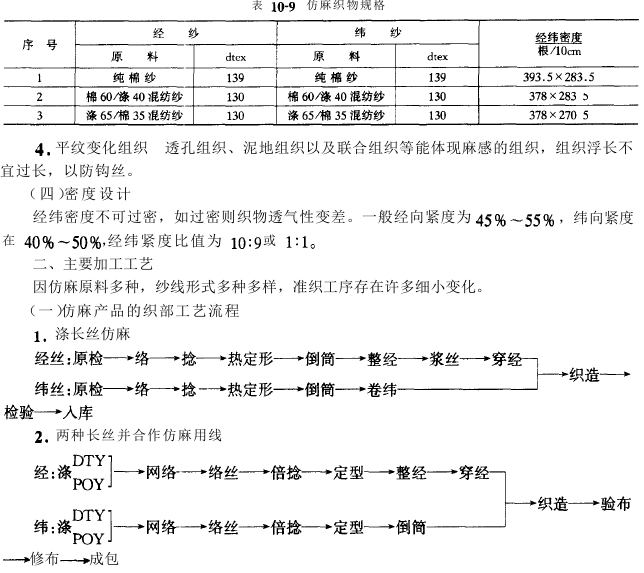Key points in the design and production process of chemical fiber linen-like fabrics
Natural linen fabric is rough, crisp, and breathable. It has unique advantages and enjoys a high reputation in domestic and foreign markets. However, due to the limitations of pure hemp raw materials, using other raw materials to replace hemp fiber and developing and designing imitation linen fabrics is one of the topics studied by designers in the fabric industry.
1. Design of the main structural parameters of chemical fiber linen-like fabrics
(1) Selection of raw materials
To develop fabrics that fully reflect the effect of linen fabrics, raw material selection is particularly important.
1. Structural characteristics of hemp fiber. Most of the longitudinal surfaces of hemp fiber are straight, with horizontal knots and vertical lines. The single fibers are shorter than cotton. Spinning must be carried out under semi-degumming, so the yarn count is thicker. The stems are uneven and appear bamboo-shaped. Therefore, raw materials such as polyester low elastic yarn, polyester slub yarn, polyester irregular draft yarn (physical and chemical yarn, two-color yarn), polyester slub yarn, polyester knot yarn and other raw materials are selected. Their appearance is close to that of hemp fiber yarn, and the imitation effect of hemp is ideal.
2. The hemp effect after dyeing and finishing treatment: Hemp fiber only contains 60% to 80% of cellulose and hemicellulose, and contains more lignin, pectin, fat, waxy ash and sugar than cotton. Substance, it is more difficult to color than cotton fiber, and the level dyeing property is also worse than cotton fiber. Most of them are dyed in light colors, and the appearance shows a grainy effect after post-processing. Therefore, the following raw materials can be used: a combination of dope yarn and ordinary yarn; a combination of ordinary polyester yarn, polyester modified yarn, and special-shaped yarn; a combination or laminated yarn of polyester and polyacrylonitrile fiber, nylon, polypropylene, etc.; polyester DTY yarn and FDT wire or a combination of FDT wire. The hemp grain effect produced by twisting and coloring gives it a rough appearance, thereby achieving a hemp-like effect.
3. The fineness and cross-sectional shape of imitation linen raw silk. When polyester filament imitates linen, the linear density of the original silk is generally 135~300 denier, the number of single filaments of silk fibroin is 24~48F, and the cross-sectional shape is six-leaf or eight-leaf. Other special-shaped silk.







AAASDFERGTRHR
Extendedreading:https://www.tpu-ptfe.com/post/7718.html
Extendedreading:
Extendedreading:
Extendedreading:
Extendedreading:
Extendedreading:
Extendedreading:
Extendedreading:
Extendedreading:
Extendedread






